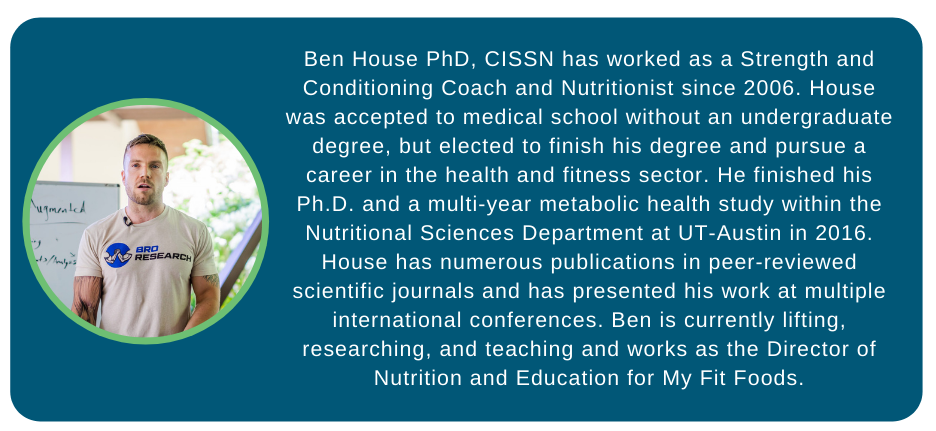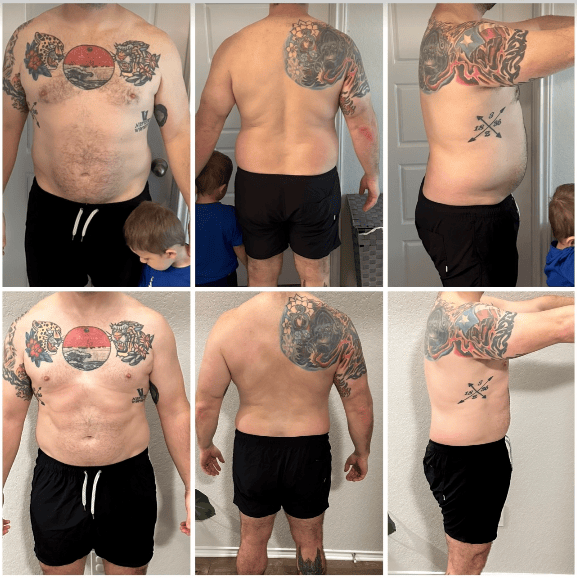The largest genome-wide association studies to date found that obesity specific genes explain about 6% of the variation in Body Mass Index (BMI) [1] and if you throw the entire genome in the mix maybe genes can explain a little over 20% of the variation in BMI [2].
So, yes there is some genetic susceptibility to Obesity, BUT it is a FAR cry from being pre-determined.
The really cool thing is that we now have an enormous amount of data showing that we can modify this risk even in highly susceptible individuals!
The two biggest factors that rise to the top.
Increasing Diet Quality and Physical Activity [3, 4].
This is why at My Fit Foods we want to:
1) Help everyone find a movement practice they love with our immense contact list of Best Fitness Friends
And
2) It is our mission to make healthy whole food as easy and as affordable as possible.
Furthermore, as a company for every four meals sold we donate one meal to those in need, and thus far this year My Fit Foods has donated 238,656 meals to families in need.
*A little side rant. The deleterious effect of our current food environment on our health and waistlines is undeniable. Just google the term Food Swamps.
Yet, the solution to this endemic and multifactorial problem ABSOLUTELY does not solely rely on some pipe dream fascination with personal responsibility as a means to increase diet quality and physical activity.
The obesity epidemic is deeply intertwined with so many other socioeconomic and cultural problems that set humans up for failure before they can even see, let alone read these letters [5-16].
Be a Good Person and Seek To Understand before Casting Down Moral Judgments based on anyone’s physical appearance or food choices.
#GIVEAFIT

REFERENCES:
1. Yengo, L., et al., Meta-analysis of genome-wide association studies for height and body mass index in approximately 700000 individuals of European ancestry. Hum Mol Genet, 2018. 27(20): p. 3641-3649.
2. Locke, A.E., et al., Genetic studies of body mass index yield new insights for obesity biology. Nature, 2015. 518(7538): p. 197-206.
3. Heianza, Y. and L. Qi, Impact of Genes and Environment on Obesity and Cardiovascular Disease. Endocrinology, 2019. 160(1): p. 81-100.
4. Huls, A., et al., Polygenic risk for obesity and its interaction with lifestyle and sociodemographic factors in European children and adolescents. Int J Obes (Lond), 2021. 45(6): p. 1321-1330.
5. Pineda, E., et al., The retail food environment and its association with body mass index in Mexico. Int J Obes (Lond), 2021. 45(6): p. 1215-1228.
6. Flanagan, A., Poverty and Obesity: Ayn Rand vs. Nutrition Science. 2021: Alinea Nutrition.
7. Drewnowski, A., et al., Food environment and socioeconomic status influence obesity rates in Seattle and in Paris. Int J Obes (Lond), 2014. 38(2): p. 306-14.
8. Kim, T.J. and O. von dem Knesebeck, Income and obesity: what is the direction of the relationship? A systematic review and meta-analysis. BMJ Open, 2018. 8(1): p. e019862.
9. Dhurandhar, E.J., The food-insecurity obesity paradox: A resource scarcity hypothesis. Physiol Behav, 2016. 162: p. 88-92.
10. Hemmingsson, E., K. Johansson, and S. Reynisdottir, Effects of childhood abuse on adult obesity: a systematic review and meta-analysis. Obes Rev, 2014. 15(11): p. 882-93.
11. Ruiz, M., et al., Impact of Low Maternal Education on Early Childhood Overweight and Obesity in Europe. Paediatr Perinat Epidemiol, 2016. 30(3): p. 274-84.
12. Fuemmeler, B.F., et al., Parental obesity moderates the relationship between childhood appetitive traits and weight. Obesity (Silver Spring), 2013. 21(4): p. 815-23.
13. Shin, A.C., H. Zheng, and H.R. Berthoud, An expanded view of energy homeostasis: neural integration of metabolic, cognitive, and emotional drives to eat. Physiol Behav, 2009. 97(5): p. 572-80.
14. Tomiyama, A.J., et al., How and why weight stigma drives the obesity 'epidemic' and harms health. BMC Med, 2018. 16(1): p. 123.
15. Cooksey-Stowers, K., M.B. Schwartz, and K.D. Brownell, Food Swamps Predict Obesity Rates Better Than Food Deserts in the United States. Int J Environ Res Public Health, 2017. 14(11).
16. Tester, J.M., L.G. Rosas, and C.W. Leung, Food Insecurity and Pediatric Obesity: a Double Whammy in the Era of COVID-19. Curr Obes Rep, 2020. 9(4): p. 442-450.
About Author: Mario Mendias





